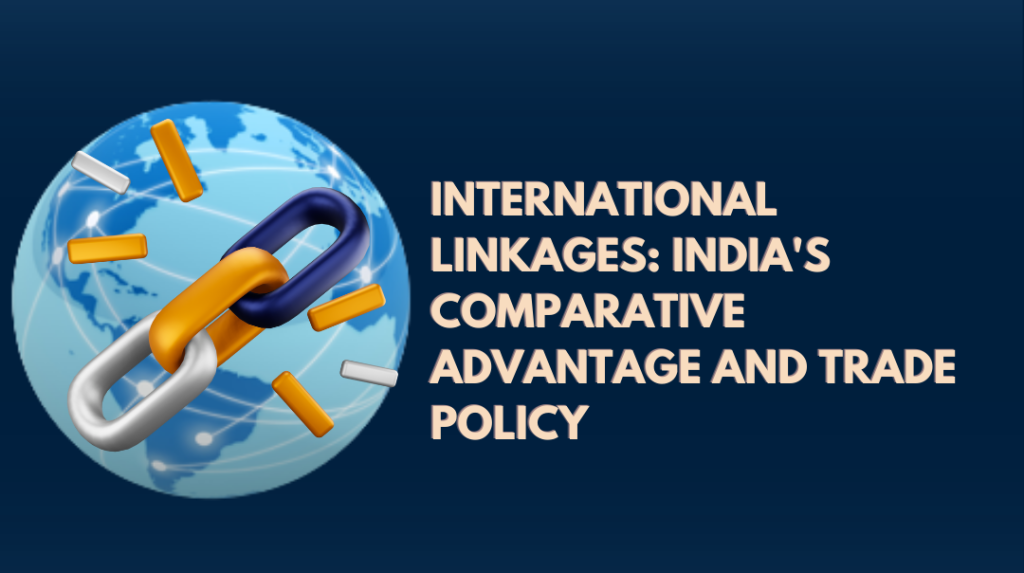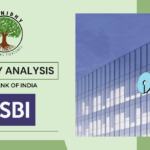
All of us have heard a multitude of things about the world becoming a global village today where the boundaries of nations are getting blurred with each passing day. International trade between India and other countries is widespread and at its peak since the economic reforms of 1991 liberalized India’s economy including foreign investment, tax reforms, banking reforms, and liberalization of international trade. Before 1991, India’s trade with other economies was very limited and regulated due to the government’s inward-looking policies. In 991 however, owing to the reforms that were given a green light under Prime Minister Narasimha Rao’s government- India started engaging in extensive trade with the rest of the world. These measures helped the Indian economy gain traction. Since then, India’s economy has advanced substantially and given way to a more globalized world.
Our understanding of events refines with time. Even though the reforms were originally implemented to help the country get through the 1991 Balance of Payments crisis, the alterations they brought about went beyond the requirements set by the International Monetary Fund for the bailout.
What are the implications of these reforms in the world that we live in today? How has India’s trade policy panned out since then? How does a nation decide if it is more beneficial to produce a good domestically or import it from outside? How are these important trade policy decisions made?
International economics as a discipline tries to provide answers to all the above questions by studying the international variations in productive resources and consumer preferences across national boundaries that affect economic activity. It aims to explain the trends and effects of exchanges and transactions, including commerce and investment, between inhabitants of various nations.
Comparative Advantage is the concept through which nations decide which products & services to export and which ones to import. To be able to understand comparative advantage, it is necessary to understand what absolute advantage is. The ability to generate more or better goods and services than competitors is referred to as having an absolute advantage. The ability to create goods and services at a lower opportunity cost, not necessarily at a higher volume or quality, is referred to as having a comparative advantage.
As per the Indian Council for Research on International Economic Relations’ research paper, India has a competitive advantage in 1512 goods. In terms of its total exports, India has a comparative advantage in 32% of its exports, which is the same as in 2000. India’s comparative advantage is concentrated on industries like agriculture, organic chemicals, cotton, iron, and steel, as well as accessories for clothing items rather than knit or crocheted items. The product category with the greatest comparative advantage is determined to be flat-rolled high-speed steel >/=600mm wide.
What this means is that the opportunity cost i.e., the cost of the next best alternative foregone for India to produce the above items is the least when compared to other countries.
For the sake of better understanding, If India can produce 80 units of cotton and 100 units of jute whereas another country can produce 100 units of cotton and 200 units of jute with a given set of resources, It is evident that even though the other nation has an absolute advantage in both cotton and jute; India has a comparative advantage in producing cotton since the opportunity cost for producing cotton in India is lower than the other nation.
How does comparative advantage help in determining the trade policy of a nation? This is where the Heckscher-Ohlin model of international economics comes into play which states that nations should export the goods and services they can create most effectively and in large quantities. The model emphasizes the export of goods requiring factors of production that a country has in abundance. It also emphasizes the import of goods that a nation cannot produce as efficiently. It takes the position that countries should ideally export materials and resources of which they have an excess, while proportionately importing those resources they need.
It then goes on to categorize resources into the binary of labor-intensive and capital-intensive and further explains that countries with relatively abundant labor and relatively scarce capital will typically export labor-intensive goods while importing capital-intensive goods. In contrast, countries with relatively abundant labor and relatively scarce capital will typically export capital-intensive goods while importing labor-intensive goods.
Some nations have a relatively high level of capital, which means that the average worker has access to a wide range of tools and machines to help with the job. These nations typically have high pay rates, which makes it more expensive to produce labor-intensive commodities like textiles, sporting goods, and basic consumer electronics than it would be in nations where there is a surplus of labor and low wage rates. Conversely, in nations with cheap and abundant capital, items like automobiles and chemicals that require a lot of capital, but little labor tend to be relatively inexpensive. Therefore, nations with a lot of capital should be able to create capital-intensive commodities cheaply and export them to cover the cost of importing goods that require a lot of labor.
According to the Heckscher-Ohlin theory, the amount of capital per worker rather than the total amount of capital is what matters. A small country like Luxembourg has much less capital in total than India, but Luxembourg has more capital per worker. Therefore, according to the Heckscher-Ohlin theory, Luxembourg will export capital-intensive goods to India and purchase labor-intensive goods in exchange.
Is this what happens in real life? Let us now dive deep into the trade practices of India to see if they are in alignment with the Heckscher-Ohlin theory and the concept of comparative advantage.
India exported goods worth $422 billion in the fiscal year 2021–2022 and services worth $250 billion during that same year. For the fiscal year 2021–2022, India’s top trading partners, as measured by the sum of their imports and exports, in billions of US dollars, were:
Source: Government of India
| Rank | Country | Exports | Imports | Total Trade | Trade Balance |
| 1 | United States | 76.11 | 43.31 | 119.42 | 32.80 |
| 2 | China | 21.25 | 94.16 | 115.41 | -72.91 |
| 3 | United Arab Emirates | 28.10 | 44.80 | 72.90 | -16.7 |
| 4 | Saudi Arabia | 8 | 34.00 | 42 | -28 |
| 5 | Russia | 1.00 | 21.00 | 22.00 | -20.00 |
| 6 | Germany | 8.21 | 13.69 | 21.9 | -5.48 |
| 7 | Hong Kong | 13.7 | 20.34 | 34.04 | -6.64 |
| 8 | Indonesia | 4.12 | 15.06 | 19.18 | -10.94 |
| 9 | South Korea | 4.85 | 15.65 | 20.5 | -10.8 |
| 10 | Malaysia | 3.71 | 9.08 | 16.93 | -5.30 |
| 11 | Singapore | 7.72 | 9.31 | 16.93 | -1.59 |
| 12 | Nigeria | 2.22 | 9.95 | 16.36 | -11.00 |
| 13 | Belgium | 5.03 | 8.26 | 16.33 | -5.29 |
| 14 | Qatar | 0.90 | 9.02 | 15.66 | -13.55 |
| 15 | Japan | 4.66 | 9.85 | 15.52 | -4.75 |
| 16 | Iraq | 1.00 | 10.84 | 15.08 | -13.42 |
| 17 | Kuwait | 1.25 | 4.97 | 14.58 | -12.18 |
| 18 | United Kingdom | 8.83 | 5.19 | 14.34 | 4.30 |
| 19 | Iran | 2.78 | 6.28 | 13.13 | -4.78 |
| 20 | Australia | 3.26 | 8.90 | 13.03 | -7.47 |
| 21 | Venezuela | 0.13 | 5.70 | 11.99 | -11.47 |
| 22 | South Africa | 3.59 | 5.95 | 11.72 | -3.40 |
| – | Remaining Countries | 126.78 | 104.92 | 231.70 | 21.86 |
| India’s Total | 422.08 | 612.61 | 1034.69 | -192.0 | |
India exports roughly 7500 different products to 192 different nations. The top 10 markets for Indian exports in 2019–2020 are listed in the table below.
| Rank | Country | Value (US$ billion) | Share of overall exports |
| 1 | United States | 57.7 | 16.94% |
| 2 | United Arab Emirates | 28.8 | 9.20% |
| 3 | China | 16.6 | 5.47% |
| 4 | Hong Kong | 10.9 | 3.53% |
| 5 | Singapore | 8.9 | 2.90% |
| 6 | United Kingdom | 8.7 | 2.80% |
| 7 | Netherlands | 8.3 | 2.69% |
| 8 | Germany | 8.29 | 2.65% |
| 9 | Bangladesh | 8.20 | 2.61% |
| 10 | Nepal | 7.16 | 2.28% |
India imports about 6000 different goods from 140 different nations. The top 10 import sources for India in 2019–2020 are listed in the following table.
| Rank | Country | Value (US$ billion) | Share of overall imports |
| 1 | China | 57.8 | 14.37% |
| 2 | United States | 30.5 | 7.57% |
| 3 | United Arab Emirates | 25.8 | 6.39% |
| 4 | Saudi Arabia | 23.0 | 5.70% |
| 5 | Russia | 21 | 4.91% |
| 6 | Switzerland | 14.8 | 3.67% |
| 7 | Hong Kong | 14.6 | 3.63% |
| 8 | South Korea | 13.2 | 3.28% |
| 9 | Indonesia | 12.8 | 3.17% |
| 10 | Singapore | 12.2 | 3.02% |
As can be seen from the data given above, India’s biggest export partners are developed countries which are capital intensive and thus require imports of products that are labor intensive. India’s population is its biggest asset, is, of course, a labor-intensive country and is exporting all the labor-intensive products to these countries with some exceptions like China and Bangladesh, which we will shortly circle back to while understanding the Leontief Paradox and the shortcomings of the Heckscher Ohlin model.
Similarly, if we look at the countries that India is importing from, there is a clear common thread of most of them being developed and capital-intensive countries that India does not have a comparative advantage in with the outlier here being China again.
India’s maximum number of exports to and imports from are with the United States which is arguably one of the most capital-intensive countries in the world. This is also in line with the Heckscher-Ohlin theory of trade.
It is reasonable to say at this point that the model does manifest itself in real life and was formulated after observing the real life for which Bertil Ohlin was even awarded the Nobel Prize in Economics in 1977.
However, despite its general plausibility, it is very important to note that the model is frequently at odds with the actual patterns of international trade. As the tables above depict, many patterns can be observed where the theory is falling apart. For example, India’s biggest importer is China despite it being a labor-intensive country. The list of India’s top ten exporters includes developing countries like China and Bangladesh which themselves are labor-intensive countries per se.
A Russian-born U S economist; Leontief was the first one to observe that the theory does not hold in a lot of situations. He argued that the United States was relatively well-endowed with capital. Therefore, the reasoning goes, the United States should export commodities that need a lot of capital and import goods that require a lot of labor. He discovered that the contrary was true: American exports typically require more labor than the kinds of goods that the country imports. The Leontief Paradox refers to these findings by him since they were the exact reverse of what the theory predicted.
A research paper from the faculty of California State Polytechnic University in Pomona in their findings about the Heckscher Ohlin model state that there is little evidence of a defined statistical relationship between India’s exports/imports ratio and its capital/labor ratio in today’s world. This does not mean that the theory has no relevance in explaining international trade between countries today. The limitations of a lack of more refined and cross-sectional data could have severely hampered the results and findings.
The Heckscher-Ohlin model has been put to test many times in the past and will yet again be put to test many times in the future.
According to the literature, putting the theorem to the test with actual data has either yielded positive or negative results in terms of its predictive power. To explain international commerce, many economists have improved upon the original model and created additional theorems. Some of them have been successful, while others have not. However, the H-O model has always served as the fundamental framework. It has been the underlying building block to decoding patterns of trade in the world. This demonstrates that the H-O theorem is still pertinent to today’s economic debate and will continue to be employed in future studies of global commerce.
Regardless of the reasons, India’s prowess as a trading partner to many countries in the world has been consistently growing which showcases its potential to become a leader in the international trade arena in the coming years. Even though the BOP deficit continues to haunt us as a nation, especially in the wake of the pandemic that has just gone by and the fears of a recession looming soon, it is important to understand that for a developing country like India, taking little positive strides every day is the key. To be able to do this, we must keep trying to understand our strengths and weaknesses with the help of the theories explained above and make decisions basis that to emerge as an international economic power.
-Simran Soni
Junior Editor TJEF
















Leave a comment